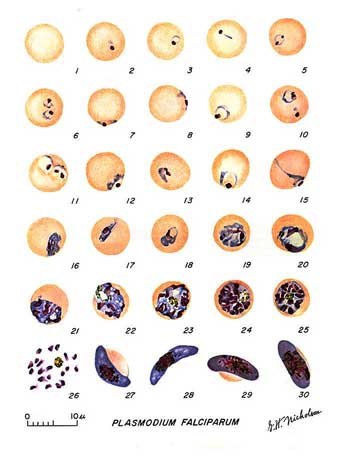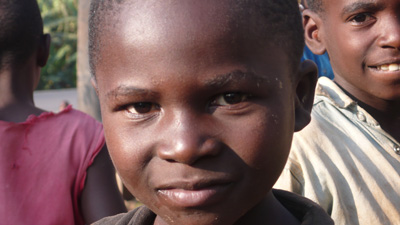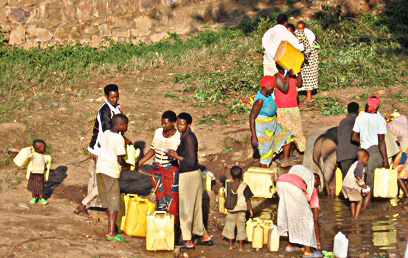|

Microscopic view of Plasmodium falaciparum in the red blood cells, cause of the most toxic form of malaria.
|
Malaria poses a significant threat with serious consequences for most of the Rwandan population since it remains the leading cause of morbidity and mortality countrywide. Most of the Rwandan population of about 8.5 million suffers an estimated two or three malaria episodes per year; with malaria-related costs representing a significant financial burden.
• Malaria is responsible for 49.40% of all in-patient deaths and 43.40% of all outpatients’ attendance (2004).
• 40 % of deaths in children under five are due to malaria. The disease is the main killer disease for that age group.
• Malaria is responsible for a high mortality rate among pregnant women and results to a high number of still-born's, premature deliveries and low birth weight.
|
|

|
Tremendous efforts have been made by the Rwandan Government to address the pandemic of HIV/AIDS and make the fight against HIV/AIDS a national priority. Efficient actions and advocacy need to be continuously stressed for HIV/AIDS prevention, care and support to be equitably disseminated to the Rwandan population.
• In Rwanda, HIV/AIDS is a generalized epidemic, since the HIV prevalence rate nationwide is 3% (DHS, 2005). The HIV prevalence rate in urban areas is consistently higher than in rural areas.
• High level of HIV infection was recorded among women and girls, particularly women in urban areas. 3,6% of women are infected with the HIV/Aids virus compared to 2.3% of the men (DHS, 2005). |
|
Some of the most wonderful humanitarian efforts in the interest of health are being provided by organizations like Partners in Health (PIH) and generosity of the Rwanda P.E.A.C.E. plan, and these hospitals and associated clinics, as well as governmental organizations, are a current major focus of AHHF.
|
|

Gathering water for the household
|
Diarrhea and helminthic diseases cause more than 70% morbidity in Rwanda.
They are mainly associated with inadequate access to safe water, unhygienic food preparation facilities and practices, unsafe disposal of feces, inadequate collection and disposal of garbage, inadequate hand washing and other unhygienic behaviors.
As a result of unhealthy environments, children in particular and immune compromised persons suffer more than three episodes per year
|
|
Diarrhea and helminthic diseases are the major killers of children under five years and the immune- compromised persons. They also kill through dehydration and malnutrition. Malnutrition has contributed to the increase in maternal and infant mortality. Appropriate nutrition is essential for the physical and mental growth of human beings particularly children.
The Rwandan government acknowledges that by investing in the nutrition, the country’s human resources would be in good health and therefore sustainable development will be strengthened. Regarding appropriate nutrition, particular emphasis must be put on young children at the school going and pre-school going age, pregnant women, breast feeding mothers and people living with the HIV / AIDS.
Although the majority of Rwandan women breast their babies, only 17, 4 % feed their babies of less than 6 months on exclusively breast milk and no other food or beverage. Nine percent of mothers in Rwanda suffer from malnutrition, particularly in the rural areas.
Forty-three percent of children of less than 5 years suffer from chronic malnutrition that has led to retarded growth, physical weakness and poor intellectual capabilities.
|
|